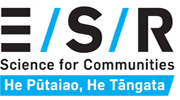Archive data for Shiga-toxin producing E.coli/verocytotoxin producing Escherichia coli (E.coli) (STEC/VTEC) isolates. For more recent data, please visit our STEC/VTEC isolates page.
-
2017
VTEC/STEC confirmations continue to increase as another laboratory commenced culture independent testing for this organism at the beginning of 2017.
Whole genome sequencing (WGS) was used over some of the 2017 year allowing typing of isolates that were not fully identifiable by phenotypic methods due to being rough; non- motile; or, not reacting in the method.
WGS has allowed better recognition of our 10 most common O types: O157, O26, O128, O146, O38, O123/186, O176, O84, O91, O107/117.
Note: the USA "Top 7" serotypes only include O157 and O26 from NZ's top 10. However, some of our common types are being regularly seen elsewhere in the world.
We still have a significant number of samples from which we have been unable to isolate the organism; and, comprehensive typing is not currently possible without a pure culture isolate. Work is ongoing to improve our isolation ability and the upcoming introduction of routine WGS will allow much better understanding of this organism.
-
2016
During 2016 a total of 488 cultures and broths were confirmed as containing verocytotoxin producing E coli (compared with 343 in 2015.)
This increase is most likely due to it being the first full year during which molecular testing for Enteric pathogens was undertaken in the Auckland region.
Alongside of this was an increase in the number of samples from which VTEC was detected but the toxin producing organism could not be isolated in pure culture. Our proportion of culture confirmed VTEC is similar to that of other National Reference Laboratories and is due to culture independent detection testing (CIDT) such as that described above detecting very low organism numbers as well as the dead, the dying, and the broken organisms. Thus we would expect CIDT to yield more positive detections than culture.
-
2015
There were 343 STEC confirmed in 2015 (183 (53.4%) E. coli O157), compared with 215 (89.3% E. coli O157) and 193 (88.1% E. coli O157), in 2013 and 2014, respectively. There was a significant increase in the number of E. coli non-O157 STEC confirmed this year, mostly in the Auckland region (from 2 cases in 2014 to 110 cases in 2015). This is most likely linked to the introduction of molecular testing for enteric pathogens in some of the diagnostic laboratories in the region.
-
2014
There were 193 STEC confirmed in 2014 (170 (88.1%) E. coli O157:H7), compared to 215 STEC in 2013 (192 (89.3%) E. coli O157:H7). The DHBs with the highest number of STEC cases were Waikato and Auckland with 38 and 35 cases, respectively.
-
2013
There were 215 STEC confirmed in 2013 (192 E. coli O157:H7), compared to 142 STEC in 2012 (119 E. coli O157:H7). A significant increase in cases confirmed by ERL was observed during the months of March, April and May 2013 mainly in the Waikato and Auckland DHBs. Pulsed field gel electrophoresis (PFGE) results showed a variation in profile types i.e. there was no clear outbreak strain. There were four main clusters in common between the Auckland and Waikato cases. These PFGE patterns had also been observed in cases from outside these regions, and among bovine isolates and historical human isolates.
-
2012
There were 142 STEC confirmed in 2012 (119 E. coli O157:H7) compared to 153 (119 E. coli O157:H7) in 2011.
-
2011
There were 139 confirmed isolates of E. coli O157:H7 (n=115 in 2010) and 14 confirmed isolates of non-O157 VTEC in 2011 (n=13 in 2010)
-
2010
There were 115 confirmed isolates of E. coli O157:H7 during 2010 compared with 137 in 2009, and 13 non-O157 VTEC isolates confirmed in 2010 compared with 8 in 2009.
